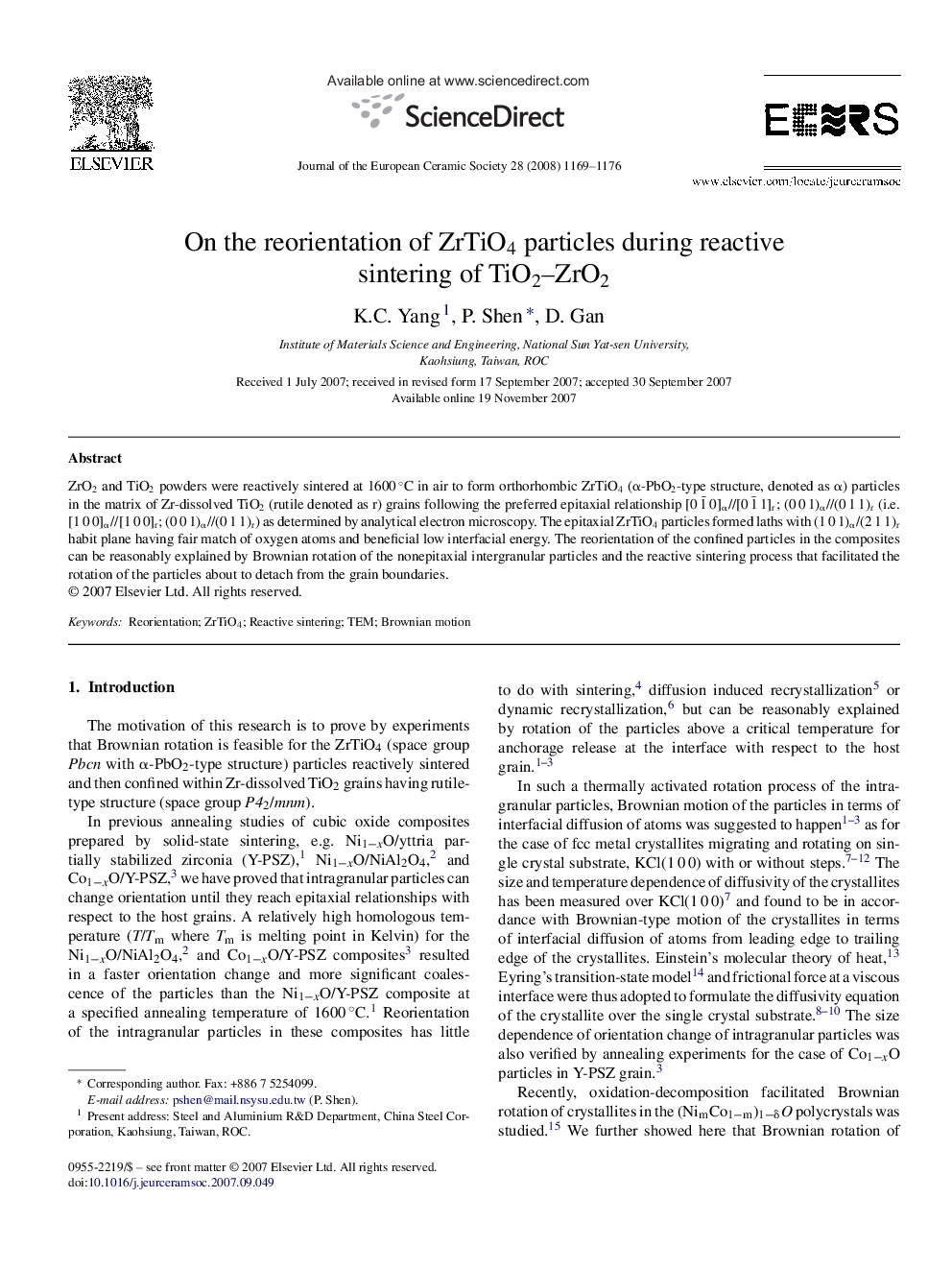| Article ID | Journal | Published Year | Pages | File Type |
|---|---|---|---|---|
| 1476851 | Journal of the European Ceramic Society | 2008 | 8 Pages |
ZrO2 and TiO2 powders were reactively sintered at 1600 °C in air to form orthorhombic ZrTiO4 (α-PbO2-type structure, denoted as α) particles in the matrix of Zr-dissolved TiO2 (rutile denoted as r) grains following the preferred epitaxial relationship [0 1¯ 0]α//[0 1¯ 1]r; (0 0 1)α//(0 1 1)r (i.e. [1 0 0]α//[1 0 0]r; (0 0 1)α//(0 1 1)r) as determined by analytical electron microscopy. The epitaxial ZrTiO4 particles formed laths with (1 0 1)α/(2 1 1)r habit plane having fair match of oxygen atoms and beneficial low interfacial energy. The reorientation of the confined particles in the composites can be reasonably explained by Brownian rotation of the nonepitaxial intergranular particles and the reactive sintering process that facilitated the rotation of the particles about to detach from the grain boundaries.
